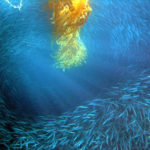
Getting down to the deepest roots. In physics, what gets called “first principles thinking,” a mode of inquiry that relentlessly pursues the foundations of a problem.’ https://en.wikipedia.org/wiki/First_principle With a thinking style that is analogous to the deep learning subset of Machine Learning called Cloud-Mind or Superswarm thinking. + Fuzzy Logic decision cloud-tree-clouds. The former two describe the machine-learning swarms of artificial intelligence systems, and are easily imagined as the computing equivalent of constellations – clouds of butterflies; or flocks of birds diving and jinking as one; or schools of fish swimming in a bait ball: davehuer.com/solving-wicked-problems/
My terms for how I think are Liquid Membraning (Anticipated Liquid Data Fields) within Fluid-Web Linkages within Cloud-Thinking. This sometimes produces uplifting experiences: the best experience of my life being to coach a teenager with twisted arms to roll a whitewater kayak, after our national whitewater slalom athletes & coaches couldn’t find a way. In all fairness, it was an enormously complex challenge. The solution was to become the anticipated orbital dynamics of the challenge: To system-feel where he could roll; then teaching him to find the pivot – to exactly mimic the harmonics’ flow-through – to learn the practicalities so he could roll himself.
Seeing that boy grin up to his dad made the day.
An earlier example comes from the years of my first degree (History, Guelph). Correcting date provenance of a building to 1855-56, by finding a missing document. This came from looking at 8 months of data, and having a niggling thought that the building was from the mid-1850s (not 1858-59 as extant data suggested), and then experiencing a “data cascade” leading me – like a line of lit-up fuse-cord – to a specific primary document (year, record type, sub-type) that my thinking said must be located in a particular university’s archives. One of eight that I’d gone to. That university’s archivist (Nancy S.) at first thought there was no such document; but then called me back, having remembered a cursorily catalogued stack of mid-19th C records donated 30 years previously; stored in the sub-basement of another building but not yet accessioned into the on-line catalogue. The document was there. Locating it took about 15 minutes.
Connecting the dots. This is what I do.